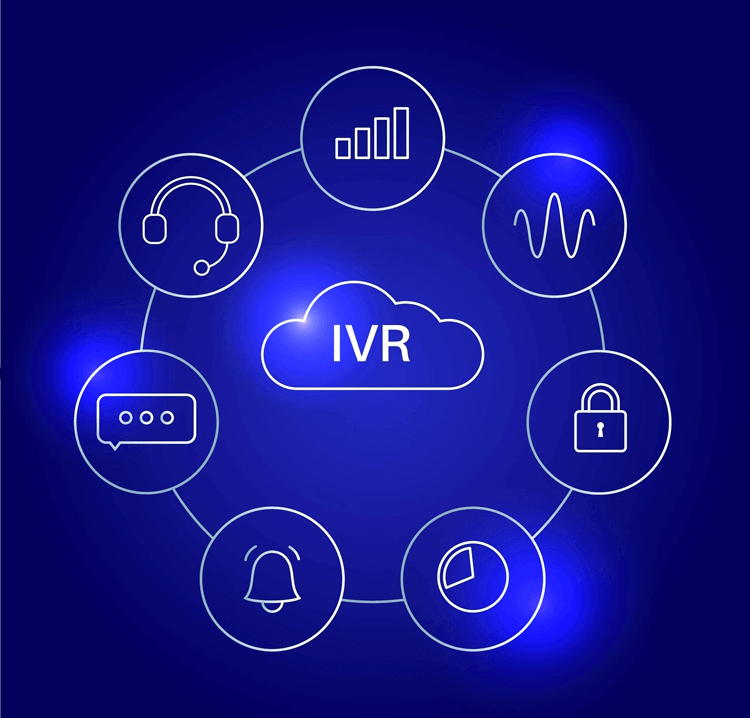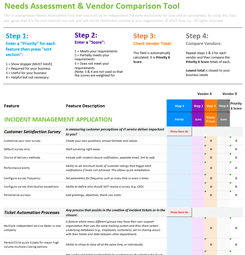Top 12 Mission-Critical Call Center Metrics: A Comprehensive Guide for CX Leaders
Call centers are a vital touchpoint in the customer experience (CX) journey, and achieving CX excellence involves hitting a long list of Key Performance Indicators (KPIs) and metrics.

Monitoring call center metrics is a critical part of the work that center managers and heads of customer experience perform.
In this guide, we will:
- Explore why call center metrics and KPIs are so important
- Provide an in-depth look at the top 12 mission-critical metrics every call center should monitor, and include simple formulas, usage guidelines, and examples of industry standards
- Examine why organizations should consistently track these metrics
Why Are Call Center Metrics and KPIs So Important?
Call center metrics are mission-critical for the success of the call center itself. They are also a key part of an organization's revenue, profitability, and customer experience.
-
Enhancing Customer Experience
Call center metrics are the most effective way to understand the customer experience.
These metrics help managers identify bottlenecks, inefficiencies, and recurring issues that could be negatively impacting the customer experience.
According to Keap: "Companies that invest in improving their customer's experience have seen, on average, a 42% improvement in customer retention, a 33% improvement in customer satisfaction, and a 32% increase in cross-selling and upselling."
For example, if the Call Abandonment Rate is high, customers will hang up due to long wait times. The same will happen in live chats, because if an AI bot or self-serve can't solve a customer problem, then they'll give up. This could cause customers to leave (churn), impacting revenue and profits.
With efficient monitoring of these metrics, organizations can proactively address pain points and elevate overall service quality.
-
Improve Operational Efficiency
Metrics such as the Average Handling Time (AHT) and Agent Utilization Rate are essential for evaluating how efficiently call center agents manage customer interactions.
-
Informing Strategic Decision-Making
Data-driven insights allow managers to make informed decisions about staffing, scheduling, training, and technology investments.
Consistently monitoring the First Call Resolution (FCR) rate can reveal whether agents have the necessary tools and authority to resolve customer issues well or not.
-
Benchmarking and Continuous Improvement
Tracking performance over time against established industry benchmarks helps organizations understand where they stand relative to competitors. It also provides a baseline for continuous improvement.
Now, let's take a closer look at the top 12 metrics you need to monitor, how you can do that, and industry benchmarks.
Top 12 List of Call Center Metrics
For each of these 12 metrics, we provide the following:
- A clear definition
- A simple formula
- Explanations on how, when, and why the metric should be used
- Examples of industry standards to help you benchmark your call center's performance
-
Average Handling Time (AHT)
Average Handling Time (AHT) is the average duration required for an agent to handle a customer issue, including talk time, hold time, and after-call work.
Formula
- AHT = Total Talk Time + Total Hold Time + Total After-Call Work / Number of Calls Handled
- Measured: Daily, Weekly, Monthly, Quarterly, and Per Agent/Team
AHT in Action
- How: Measure the time taken from the moment an agent picks up the call until the call is fully processed.
- When: Use AHT to gauge efficiency during both peak and off-peak hours.
- Why: A lower AHT typically indicates efficient call handling, though it must be balanced against quality metrics to ensure that quick resolutions do not compromise customer satisfaction.
Industry Benchmarks
While AHT benchmarks can vary by industry, a typical range in many call centers is between 4 to 6 minutes. On average, AHT is now 6 minutes across all industries and sectors.
-
First Call Resolution (FCR)
First Call Resolution (FCR) measures the percentage of customer issues resolved during the first call (or live chat) without the need for follow-up calls. Any interaction between a customer and a human agent is monitored as an FCR KPI.
Formula
FCR (%) = Number of Calls Resolved on First Contact / Total Number of Calls X 100
FCR in Action
- How: Track the resolution status of each call using call tracking systems or CRM tools.
- When: Monitor FCR on a daily, weekly, or monthly basis to quickly spot trends.
- Why: High FCR is a key indicator of customer satisfaction and operational efficiency. It minimizes customer effort and reduces overall call volume.
Industry Benchmark
The current industry benchmark for FCR is 80%. However, this can vary based on call complexity and industry-specific factors.
McKinsey is reporting that 58% of call center managers expect call volumes to keep increasing, making FCR and AHT even more important.
-
Net Promoter Score (NPS)
The Net Promoter Score (NPS) gauges customer loyalty by asking customers how likely they are to recommend the company to others.
High scores are the goal because the more word-of-mouth recommendations that come organically inbound, the less work a company needs to do to bring in more customers.
Formula
NPS = % Promoters (score 9 - 10) – % Detractors (score 0-6)
NPS in Action
- How: Conduct regular surveys post-interaction to collect feedback.
- When: NPS should be measured periodically, often quarterly or annually, to track long-term customer sentiment.
- Why: NPS is a strong predictor of growth and customer retention. It provides a clear indicator of overall customer satisfaction and brand advocacy.
Industry Benchmark
A very basic example of a good NPS score generally ranges between 30 and 50. Scores above 50 are considered excellent, though expectations vary by industry.
According to Retently, depending on the industry, and if the focus is B2B or B2C, the range of scores can greatly vary.
-
Customer Satisfaction Score (CSAT)
A Customer Satisfaction Score (CSAT) reflects the customer's immediate satisfaction with the call center interaction they just had, typically measured on a scale from 1 to 5.
Formula
CSAT (%) = Sum of Customer Satisfaction Scores / (Total Survey Responses X Maximum Score) X 100
CSAT in Action
- How: Use post-call surveys asking customers to rate their experience.
- When: CSAT should be captured immediately following the call to provide accurate feedback.
- Why: CSAT directly measures the customer's perception of the service received, allowing for targeted improvements.
Industry Benchmark
Most call centers strive for a CSAT score of 85% or higher.
-
Customer Effort Score (CES)
The Customer Effort Score (CES) assesses how much effort a customer has to exert to resolve an issue or get their problem resolved. A high level of effort on a customer's part isn't a good thing.
Customers want their problems solved quickly and easily, without them having to spend a long time waiting to speak to agents, on hold, or waiting for a resolution.
Formula
CES = Total Effort Scores / Number of Responses
CES in Action
- How: Ask customers to rate the ease of resolving their issue on a scale (e.g., 1 to 10).
- When: CES surveys are best requested from customers immediately after the interaction. In most cases, customers can say yes or no to being put through to an automated survey. Or a text is sent directly following a call.
- Why: Reducing customer effort is important for improving overall satisfaction. A lower CES indicates that customers find the process effortless, contributing to positive loyalty.
Industry Benchmark
While there's no one-size-fits-all target, organizations aim for lower scores indicating minimal effort. Benchmarking against industry peers can provide further guidance.
-
Agent Utilization Rate
The agent utilization rate measures the percentage of time agents spend actively handling customer interactions versus being idle.
Formula
Agent Utilization Rate (%) = Time Spent Handling Calls / Total Available Time X 100
Agent Utilization in Action
- How: Track agent activity using call center software and workforce management systems.
- When: Monitor this metric continuously to keep staffing levels and agent productivity optimal.
- Why: High utilization rates can indicate efficient use of resources but should be balanced to avoid burnout and maintain high service quality.
Industry Benchmark
The average agent utilization rate in call centers is 48%, allowing time for breaks and after-call work (VoiceSpin). However, this number may vary widely, depending on the size of the call center, the number of agents and the number of calls received.
-
Occupancy Rate
The agent occupancy rate is the percentage of time agents are actively engaged with customers, including both live calls and after-call work, like taking notes.
Formula
Occupancy Rate (%) = Time on Call + After-Call Work / Total Logged-In Time X 100
Occupancy Rate in Action
- How: Use workforce management tools to track logged-in time versus active engagement.
- When: This metric should be analyzed during various shifts to understand peak versus off-peak performance.
- Why: A high occupancy rate suggests efficient scheduling; however, excessively high rates can signal agent overload and potential quality issues.
Industry Benchmark
A healthy occupancy rate usually falls between 85% and 90% (LiveAgent stats). However, scores above 90% may warrant review to prevent burnout.
-
Call Abandonment Rate
The call abandonment rate measures the percentage of incoming calls that are terminated by the caller before reaching an agent.
Formula
Abandonment Rate (%) = Number of Abandoned Calls / Total Incoming Calls X 100
Call Abandonment Rate in Action
- How: Track call abandonment via call center software.
- When: This metric is most important during peak periods when long wait times are common.
- Why: A high abandonment rate can indicate insufficient staffing or inefficient call routing, leading to lost opportunities and dissatisfied customers.
Industry Benchmark
Many call centers target an abandonment rate of less than 5%, though the acceptable rate may vary depending on industry standards and call volumes.
Sixty-six percent of customers reach their limit at two minutes waiting on hold before hanging up, so you need to have enough agents to handle the expected volume of inbound calls within two minutes.
-
Complaint Rate
The complaint rate quantifies the frequency of customer complaints relative to total customer calls, live chats, and any other customer interactions.
Formula
Complaint Rate (%) = Number of Complaints / Total Customer Interactions (Calls & Live Chats) X 100
Complaint Rate in Action
- How: Monitor customer feedback channels, call recordings, complaint teams, and CRM systems to capture complaint data.
- When: Analyze complaints regularly to identify recurring issues.
- Why: Tracking the complaint rate helps to pinpoint areas where service quality can be improved. A high complaint rate may signal deeper issues in process or training that need addressing immediately.
Industry Benchmark
A low complaint rate is always the aim, with benchmarks typically under 2-3% for well-managed call centers and brands (Census stats).
-
Call Transfer Rate
This metric measures the percentage of calls that are transferred to another agent (e.g., a different team or manager).
Formula
Transfer Rate Percentage (%) = Number of Inbound Transferred Calls/ Total Calls Handled X 100
Transfer Rate in Action
- How: Use call monitoring systems to track the frequency of transfers.
- When: Regular analysis helps identify if transfers are due to agents lacking authority or to process inefficiencies.
- Why: Minimizing transfers is critical for ensuring a seamless customer experience and reducing resolution times.
Industry Benchmark
Most call centers aim to keep transfer percentages low, ideally below 10%. High percentages indicate a need for further agent training, resources, or an improved FCR process. It could also mean that the Interactive Voice Response (IVR) isn't working well for customers if they're constantly going to the wrong teams.
-
Agent Turnover
Agent Turnover tracks the rate at which call center agents leave the organization over a specific period. When turnover is high, it indicates staff don't like working in your organization, and this is something that needs fixing.
Formula
Agent Turnover (%) = Number of Departing Agents / Average Total Agents X 100
Agent Turnover in Action
- How: Analyze HR records and staffing reports monthly and quarterly.
- When: Monitor turnover rates quarterly or annually to assess employee satisfaction and retention efforts.
- Why: High turnover can lead to increased training costs and reduced service consistency. It's essential to identify underlying causes and implement retention strategies to maintain a stable workforce.
Industry Benchmark
A typical annual staff turnover rate in call centers ranges from 30% to 45%. Lower rates indicate a healthier work environment and better retention practices.
-
Service Levels and Response Times
Service Levels refer to the percentage of calls answered within a predefined threshold, while Response Times measure how quickly customer calls are handled (e.g., FCR). When you combine these, it shows you how well (or not) a call center is performing at any given moment.
Formulas
- Service Level (%) = Number of Calls Answered Within Target Time / Total Calls Answered X 100
- Average Response Time = Total Time Taken to Answer Calls / Total Number of Calls
Service/Response in Action
- How: Monitor through call distribution systems, IVRs, and real-time dashboards.
- When: Track these metrics continuously, especially during busy times.
- Why: High service levels and quick response times are critical for customer satisfaction. This indicates a call center's ability to meet service expectations and minimize customer wait times.
Industry Benchmark
Most call centers aim for a service level of 80% (e.g., 80% of calls answered within 20 seconds). Of course, response time benchmarks depend on the industry, seasonality, staffing levels, use of self-serve and AI, call volumes, and complexity of issues agents are handling on calls.
Why Should Organizations Always Track Call Center Metrics?
Here are 4 good reasons why organizations should always track the 12 metrics in this article.
-
Proactive Problem Solving
Call center managers can catch issues early before they escalate into larger problems. A sudden dip in the Customer Satisfaction Score (CSAT) might signal a training gap or a process inefficiency that needs immediate attention.
-
Accountability and Transparency
Metrics create accountability. When performance is measured and reported, teams are more likely to take ownership of their roles. This creates a culture of continuous improvement, where everyone is committed to improving results. If you give agents rewards for hitting KPIs then that contributes to the team's success.
-
Customer-Centric Culture
Aligning call center performance with customer expectations is imperative. Monitoring metrics such as Net Promoter Score (NPS) and Customer Effort Score (CES) provide direct insights into customer perceptions and help shape policies that prioritize customer needs.
-
Optimizing Resource Allocation
Understanding key metrics helps in effective resource planning and management. Data-driven insights help make sure that investments in technology and staff are directed where they are most needed.
Improving Call Center Metrics: Best Practices
Metrics are only useful if you can do something with them. Here are 6 ways you can improve team and operational performance as a manager or leader of CX.
-
Regular Monitoring and Reporting
Implement real-time dashboards and regular reporting cycles to keep all stakeholders informed. Transparency in performance metrics encourages accountability and timely corrective actions.
-
Invest in Training and Development
Regularly train agents on both technical skills and soft skills. Empowering agents with proper training can lead to improvements in metrics such as FCR, CSAT, and even reduce the complaints rate.
-
Leverage Technology, AI and Automation
Adopt modern call center technologies — such as AI-driven call routing, IVR systems, and integrated CRM platforms — to reduce AHT, improve response times, and increase overall efficiency.
-
Optimize Workforce Management
Use workforce management tools to schedule shifts based on real-time data and historical trends. More efficient scheduling can improve agent utilization and occupancy rates while preventing agents negatively impacting CSAT, CES, and NPS scores.
-
Focus on Customer Feedback
Make getting customer views through CSAT, CES, and NPS surveys a regular and automated process. Use these scores to fine-tune processes and quickly solve recurring issues. A customer-centric approach will drive improvements across multiple metrics.
-
Set Clear Performance Benchmarks
Define clear, realistic targets for each metric. Benchmark against industry standards and adjust to the scale of your operations. Teach your team so they understand these targets and the importance of meeting them.
Key Takeaways: Monitor Call Center Metrics for the Best in Operational Efficiency
Understanding and effectively monitoring these 12 mission-critical metrics can empower call center managers and CX leaders to:
- Enhance Customer Experience: Improving first-contact resolutions and AHT has a resulting effect on customer satisfaction scores (e.g., NPS, CSAT), reducing churn and the overall customer experience.
- Improve Operational Efficiency: Through balanced staffing, streamlined processes, live chat, self-serve, and better agent utilization a call center can become more efficient.
- Drive Informed Decision-Making: Making use of KPI data assists in fine tuning and adjusting strategies, training, and resource allocation.
- Benchmark Performance: Compare call center metrics performance against industry standards to ensure that continuous improvement and competitive advantage are maintained.
Each metric plays an important role in the comprehensive picture of call center performance. Combined, these metrics provide actionable insights that can be translated into tangible improvements in service quality, cost management, and overall customer satisfaction.
Monitoring metrics provides you with the valuable tools you need to create ways to improve performance and fix problems.
Because this is an in-depth guide, we've answered some of the most common FAQs below.
4 Call Center Metrics Frequently Asked Questions (FAQs)
-
Is a KPI the Same as a KRA (Key Responsibility Area)?
No, these aren't the same. A KPI is a quantifiable metric that reflects how effectively a company is achieving key business objectives.
On the other hand, a KRA (Key Responsibility Area), is a specific area of responsibility within a job role. For example, a KRA might include a call center agent handling customer inquiries or managing escalations.
While KPIs measure the success in these areas, KRAs outline what the responsibilities are.
-
Is There a Call Center Metric More Important Than Others?
In some ways, yes, and certainly the most important in most sectors focus on customer satisfaction (e.g. First Call Resolution rate, Customer Satisfaction score, and Net Promoter Score are most important) and operational efficiency.
If operational efficiency is the focus, Average Handling Time, Agent Utilization Rate, and Occupancy Rate become more significant.
To create the call center and CX you want, a balanced approach that monitors multiple metrics is essential, as improvements in one area (like efficiency) shouldn't negatively impact customer satisfaction scores.
-
How Do You Improve Call Center Metrics and Staff Performance?
Improving call center metrics involves multiple steps and continuous action points:
- Training and Coaching: Develop and put into practice continuous training programs tailored to address specific weaknesses. These could be for teams or individual agents who are struggling to hit their KPIs.
- Technology Use: Implement SaaS and AI-based tools for call routing (like IVR), performance monitoring, and data analytics.
- Employee Engagement: Cultivate and nurture a positive work environment, recognizing and rewarding high performance to reduce turnover.
- Process Optimization: Regularly review workflows to identify and eliminate inefficiencies.
- Feedback Loops: Use customer and agent feedback to make iterative improvements. Combined, these steps lead to better overall performance and improved metrics across the board.
-
What Does FCR (First Call Resolution) Mean and Why Is It Important?
FCR is a metric that measures the percentage of customer issues resolved during one-and-only calls, without needing a follow-up call, message, or email.
It's a critical indicator of both customer satisfaction and operational efficiency. High FCR rates reduce the need for repeat calls, minimize customer effort, and contribute to a positive customer experience.
FCR directly impacts other metrics such as CSAT and operational costs. Achieving a high FCR means that agents are well-trained, empowered to resolve issues promptly, and have access to the necessary tools and information to provide effective solutions.
Other Useful Call Center Resources
- Learn How To Improve Your Customer's Experience with Expert Insights
- The 10 Most Important Customer Experience Statistics for 2025 with How To's and Examples
- 20 Top Strategies for Proactive Customer Service Plus Examples
- Buyer's Guide: The 24 Best Customer Service Software for 2025
- Giva: People & AI-Powered Customer Service Software
Giva Can Help Streamline Your Call Center Operations
Supercharge your call center agents and team performance with Giva's Customer Service Software. Giva comes with a simple, clean design.
- Start serving customers after just 1 hour of training
- Resolve issues quickly and effortlessly with AI Copilots, automation and smart workflows
- Get immediate and actionable customer insights with highly visual dashboards, reports, charts and graphs
Get a free demo to see Giva's solutions in action, or start your own free 30-day trial today!





